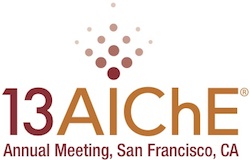

Ionic liquids are gaining increasing acceptance as novel solvents for chemical transformations. This has included a recent focus on the use of ionic liquids for the separation of biopolymers (lignin and cellulose). During this process , the biopolymers are susceptible to multiple types of interactions with the ionic solvent , which can lead to depolymerisation (fragmentation or cleavage reactions) , solvolysis or solvent addition reactions. Our recently proposed Ionosolv process focusses on the use of highly acidic ionic liquids for biomass pretreatment. During pretreatment , all biopolymers in solution (lignin , cellulose , hemicelluloses) are subjected to harsh chemical consitions (non-aqueous , highly acidic , moderate temperature) which can induce novel reactivities. This paper will explore several potential reactions of the ionic liquid solvents with these biopolymers , including ether and ester cleavage and anion-induced substitution reactions. A variety of chemical characterisation techniques have been explored to ensure both a qualitative and quantitative measure of this reactivity. We have also utilised a series of model compounds (esters , ethers and alcohols) to explore the reactivity of individual polymer subunits with the solvent under a variety of consitions. This portion focusses on electronic effects of the substrate and explores reaction kinetics and changes in mechanism with different functional groups.
